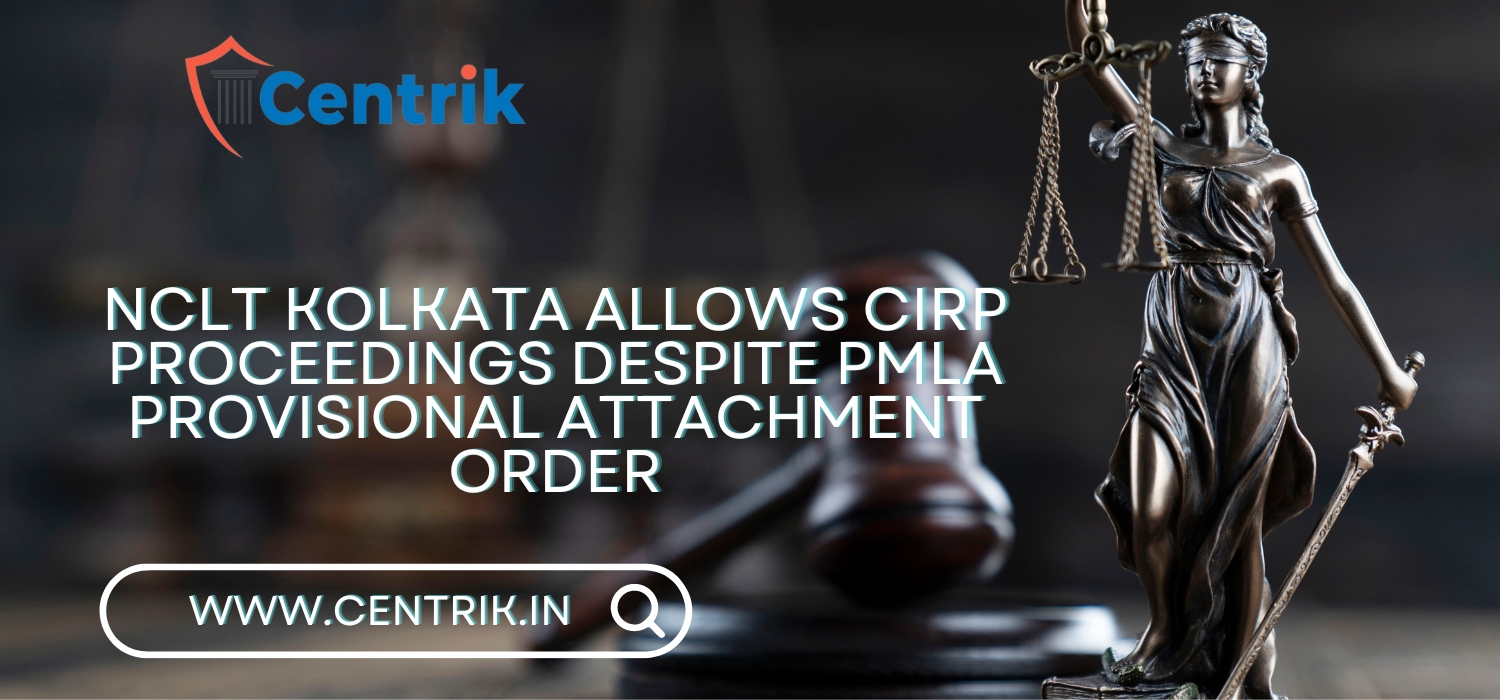
In a significant ruling, the National Company Law Tribunal (NCLT) Kolkata, comprising Smt. Bidisha Banerjee (Judicial Member) and Shri D. Arvind (Technical Member), has upheld the admission of Corporate Insolvency Resolution Process (CIRP) proceedings against Shree Mahalaxmi Corporation Pvt. Ltd. (the Corporate Debtor) under the Insolvency and Bankruptcy Code, 2016 (IBC), despite a Provisional Attachment Order under the Prevention of Money Laundering Act (PMLA). The case, titled State Bank of India vs. Shree Mahalaxmi Corporation Pvt. Ltd., marks a pivotal moment in the intersection of insolvency laws and anti-money laundering measures.
The background of the case revolves around the initiation of CIRP proceedings by the State Bank of India (SBI), seeking to recover a substantial debt amounting to Rs. 563.44 crores from the Corporate Debtor. The debt stemmed from a loan default dating back to 29.12.2012. Despite the Corporate Debtor’s contention that all its assets were under the jurisdiction of the enforcement directorate due to a Provisional Attachment Order under PMLA, the NCLT Kolkata ruled in favor of admitting the CIRP application.
Central to the Tribunal’s decision was the clear distinction it drew between the objectives and mechanisms of the IBC and the PMLA. While the PMLA primarily aims at confiscating proceeds of crime to prevent individuals from benefitting from criminal activities, the IBC focuses on reorganizing and resolving corporate insolvency in a time-bound manner, safeguarding stakeholders’ interests and promoting entrepreneurship.
Drawing from precedent-setting judgments such as Kiran Shah, RP of KSL and Industries Ltd vs. Enforcement Directorate and Deputy Director of Enforcement, Delhi vs. Axis Bank & Ors., the NCLT emphasized the need to balance the objectives of both legislations while ensuring that legitimate claims are addressed appropriately. It highlighted that the attachment of assets under PMLA does not grant the enforcement directorate superior rights over the property in question vis-à-vis the resolution process under the IBC.
Referring to the principles laid down in the Delhi High Court’s decision of Rajiv Chakraborty Resolution Professional of EIEL vs. Directorate of Enforcement, the Tribunal underscored the availability of avenues for addressing claims and grievances within the framework of both statutes. It clarified that Resolution Professionals are empowered to seek relief from competent authorities under PMLA concerning properties tainted by criminal activity, while ensuring compliance with legal procedures.
The NCLT Kolkata’s decision reaffirms the principle that the admission of CIRP proceedings under the IBC cannot be impeded solely by the existence of a Provisional Attachment Order under PMLA. It underscores the importance of upholding the integrity and efficacy of insolvency resolution mechanisms while concurrently addressing concerns related to money laundering and illicit financial activities.
In conclusion, the ruling in the case of State Bank of India vs. Shree Mahalaxmi Corporation Pvt. Ltd. sets a precedent for the coexistence of insolvency and anti-money laundering laws, ensuring that the interests of creditors, stakeholders, and the broader financial ecosystem are duly protected and balanced within the ambit of legal frameworks.




 join For Updates
join For Updates